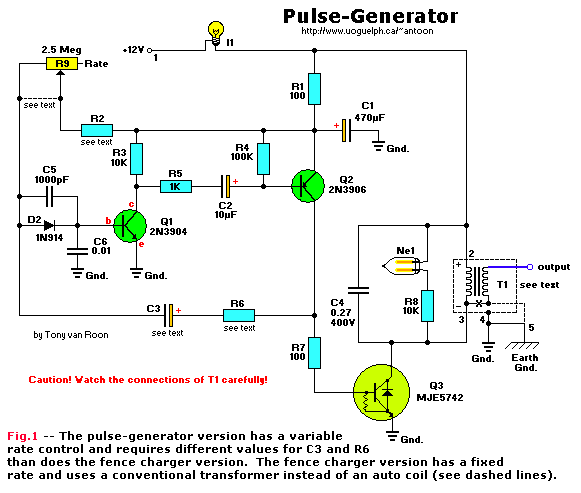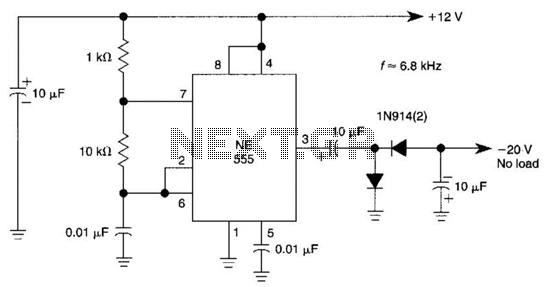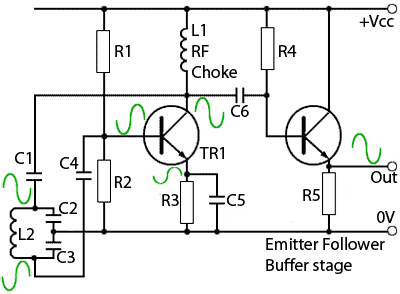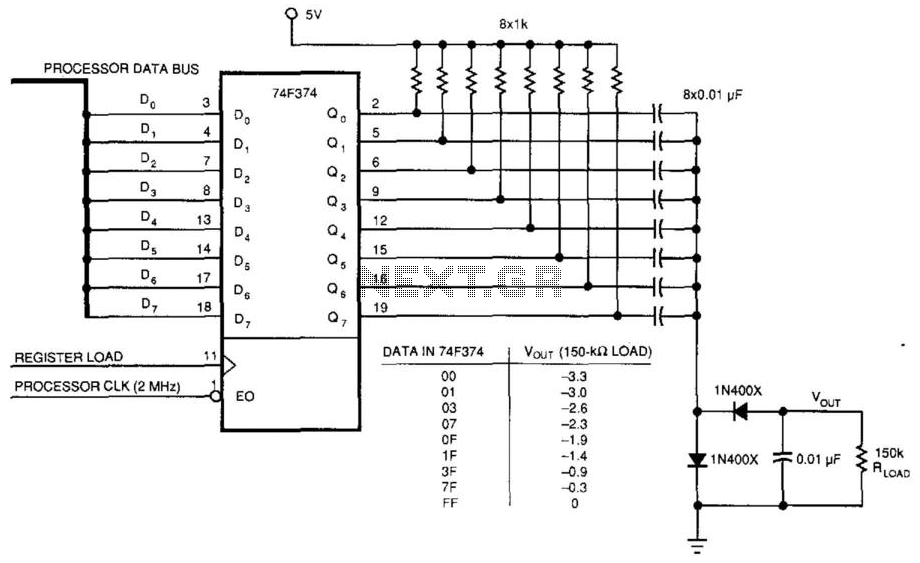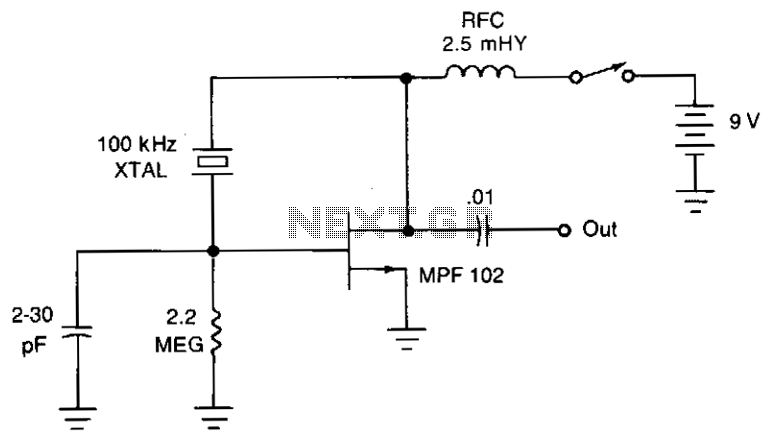
Simple voltage controlled oscillator
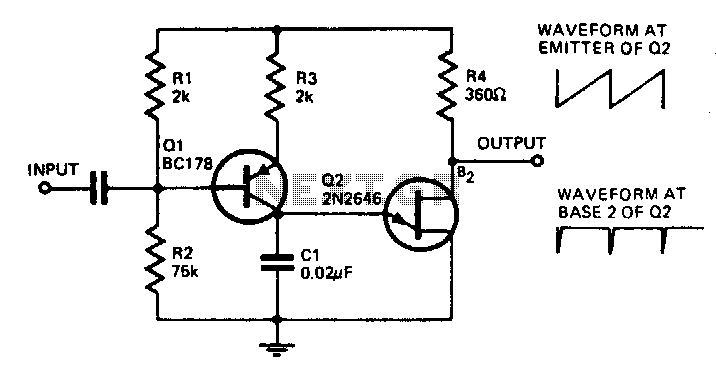
With the component values shown, the oscillator has a frequency of 8 kHz. When an input signal is applied to the base of Q1, the current flowing through Q1 is varied, thus affecting the time required to charge C1. Due to the phase inversion in Q1, the direction of output frequency change is 180 degrees out of phase with the input signal. The output may be used to trigger a bistable flip-flop.
The described oscillator circuit operates at a frequency of 8 kHz, determined by the selected component values. The key component, Q1, functions as a transistor that modulates the current flowing through it in response to an input signal applied to its base. This modulation directly influences the charging time of capacitor C1, which is critical for establishing the oscillation frequency.
The phase inversion characteristic of transistor Q1 is significant; it introduces a 180-degree phase shift between the input signal and the output signal. This means that when the input signal reaches its peak, the output signal is at its trough, effectively inverting the waveform. This behavior is essential in various applications, particularly in timing circuits and waveform generation.
Furthermore, the output from this oscillator can be utilized to trigger a bistable flip-flop. A bistable flip-flop is a type of digital memory circuit that has two stable states and can be used to store binary information. The oscillator's output provides a clock signal that can toggle the state of the flip-flop, allowing for precise control in digital applications, such as counters, registers, or state machines.
In summary, this oscillator circuit not only generates an 8 kHz signal but also offers versatility in digital logic applications by providing a phase-inverted output that can effectively trigger bistable flip-flops. The design's simplicity and effectiveness make it a valuable component in various electronic systems.With the component values shown, the oscillator has a frequency of 8 kHz. When an input signal is applied to the base of Ql the current flowing through Ql is varied, thus varying the time required to charge Cl. Due to the phase inversion in Ql the direction of output frequency change is 180 degrees out of phase with the input signal
The output may be used to trigger a bistable flip-flop.
The described oscillator circuit operates at a frequency of 8 kHz, determined by the selected component values. The key component, Q1, functions as a transistor that modulates the current flowing through it in response to an input signal applied to its base. This modulation directly influences the charging time of capacitor C1, which is critical for establishing the oscillation frequency.
The phase inversion characteristic of transistor Q1 is significant; it introduces a 180-degree phase shift between the input signal and the output signal. This means that when the input signal reaches its peak, the output signal is at its trough, effectively inverting the waveform. This behavior is essential in various applications, particularly in timing circuits and waveform generation.
Furthermore, the output from this oscillator can be utilized to trigger a bistable flip-flop. A bistable flip-flop is a type of digital memory circuit that has two stable states and can be used to store binary information. The oscillator's output provides a clock signal that can toggle the state of the flip-flop, allowing for precise control in digital applications, such as counters, registers, or state machines.
In summary, this oscillator circuit not only generates an 8 kHz signal but also offers versatility in digital logic applications by providing a phase-inverted output that can effectively trigger bistable flip-flops. The design's simplicity and effectiveness make it a valuable component in various electronic systems.With the component values shown, the oscillator has a frequency of 8 kHz. When an input signal is applied to the base of Ql the current flowing through Ql is varied, thus varying the time required to charge Cl. Due to the phase inversion in Ql the direction of output frequency change is 180 degrees out of phase with the input signal
The output may be used to trigger a bistable flip-flop.
